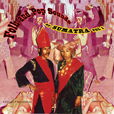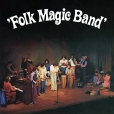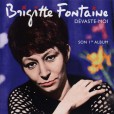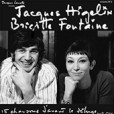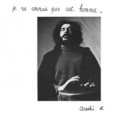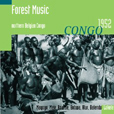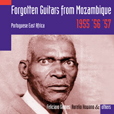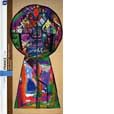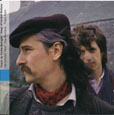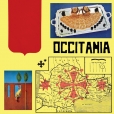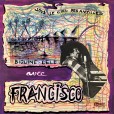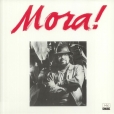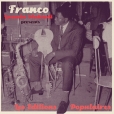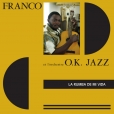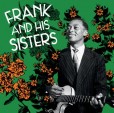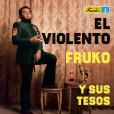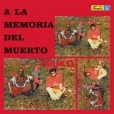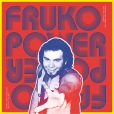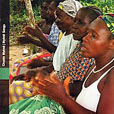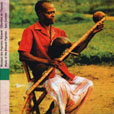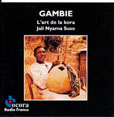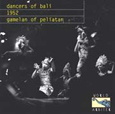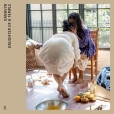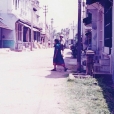Your basket is empty

Limited, gatefold LP version of the first SF CD release in 2003: droning beat pop, early Orkes Melayu songs, Batak Tapanuli, traditional Minang, and rare folk drama from the Indonesian island, from cassettes.
Originally released by the Folkstudio label in 1976, this is infectiously exuberant, eighteen-piece spiritual jazz in the tradition of the Arkestra, the Organic Music Society, and Mingus; strung between the post-war big bands and the Italian outernationalism of projects like Aktuala and Futuro Antico, drawing in music from Asia, Africa, and Latin America.
Her debut album, thirteen ‘chansons décadentes et fantasmagoriques’, originally released in 1966.
Her 1967 album of duets with Jacques Higelin, retaining arranger Jimmy Walter from her debut, the previous year. Two songs here — La Grippe and Maman — became centrepieces of the duo’s stage musical, Maman J’ai Peur.
From 1973, the first of her recordings as a duo with Areski. ‘Deeply rooted in North African and European folk traditions… evocative vignettes with breezy vocals and minimal accompaniment of classical guitar, strings and woodwinds… One of their best-loved albums, for its remarkable sense of intimacy… beckoning listeners into a strange and beautiful world.’
Two Mangbetu communities from the rainforest, the Mayogo and the Meje: drum ensembles, mass singing, likembe. Also the xylophone and kundi harp of the Azande people; more harp songs by the Balendu.
The roots of marrabenta — compelling guitar-playing, and gritty songs about everyday issues, like having kids, sleeping around, snobbery and the supernatural.
‘Wild songs’ (without words), sophisticated choral singing, improvisations, pastorals and newer song forms.
Erik Marchand singing, with his accompanist Thierry Robin finding the ud better suited than guitar or mandolin to the intervalic arrangements of quarter tones peculiar to this repertoire.
Sixteen wonders from the first three years of Franco’s own imprint Les Editions Populaires, founded in 1968. Mostly OK Jazz, performing ravishing rumbas and bolero ballads in Lingala, traditional songs in Kikongo, Kimongo, and even Yoruba, collaborations with Ngoma artists Camille Feruzi and Manuel d’Oliveira, and their own tough take on US funk.
Glorious music. Bim.
Radiant 1950s Tanzanian pop.
‘As a trio Frank Humplick, Thecla Clara and Maria Regina recorded and toured throughout East Africa and issued a string of instant classics, capturing fans with their beautifully harmonized singing, clever lyrics, and Frank’s stunning guitar work. Imagine the fingerstyle finesse of John Fahey cut with a pure pop melodicism, and combined with the family harmony of groups like The Carter Family, The Roches, and The Beach Boys, set in the golden age of Tanzanian music!’
With a colourful eight-page booklet featuring complete lyrics in English, Swahili and Chaga, as well as previously unpublished photographs, extensive interviews, biographies and anecdotes.
Choca with unrelentingly hard and heavy salsa bangers, school of Willie Colon, this 1973 album is the fifth full-length salsa LP led by Julio Ernesto Estrada Rincón, aka Fruko, and the second credited to Fruko Y Sus Tesos. The singers are Joe Arroyo and Wilson ‘Saoko’ Manyoma; besides salsa, the rhythms are mozambique, conga, bomba, and jala jala.
The stone-cold-killer descarga Salsa Na Ma is here. Phew-wee. Raging dancefloor fire.
Rough, tough salsa brava from 1972.
The soaring, soulful vocals of Edulfamid Molina Díaz front an augmented, more aggressive brass section —introducing another trumpet and two trombones to the lineup— swaggering through a dazzling range of rhythms including guaguancó, bomba, plena, oriza, bolero, cha-cha-chá, descarga, and Latin soul.
Warmly recommended.
Mainly for rituals of initiation, possession and mourning, with the women singing and shaking a tchege, besides drums, a palm branch hit with a stick, a harp, and a bow played with the mouth.
Polyphonic song — a kind of broken, yodelling counterpoint — accompanied by drums, sticks, sanza, vegetal trumpets, hand-clapping.
Virtuoso performances recorded in 1972 and al fresco in 1970, mixing together works from the nineteenth century heartlands of the instrument, and rocking Mande tunes of the 1960s and 70s.
Gong, angklung and gender wayang under the direction of Anak Agung Gede Mandera.
‘An innovative and deeply moving blend of spiritual jazz and South Asian devotional music’, with contributions from Esperanza Spalding, Vijay Iyer, Shabaka Hutchings, Immanuel Wilkins…
